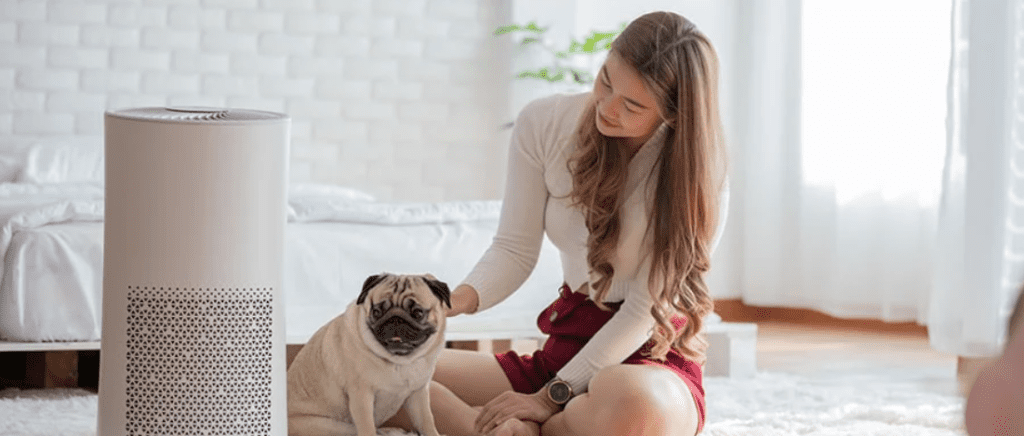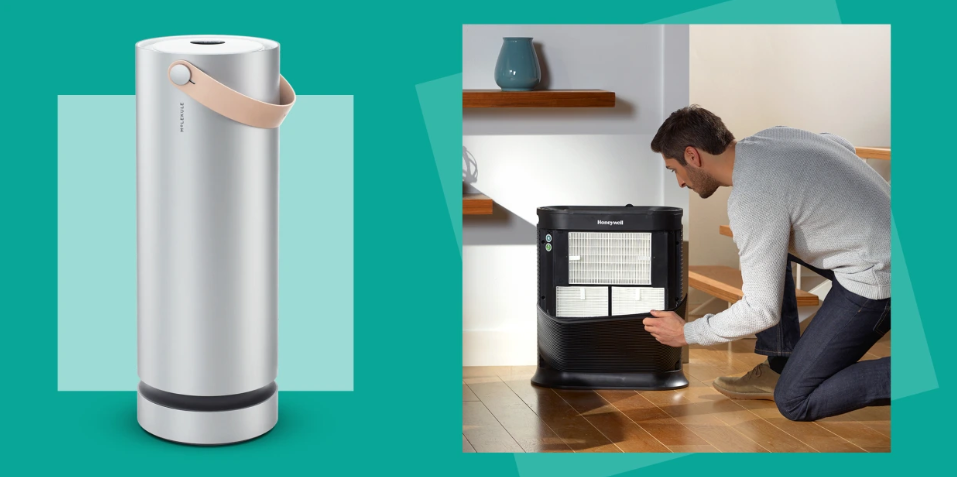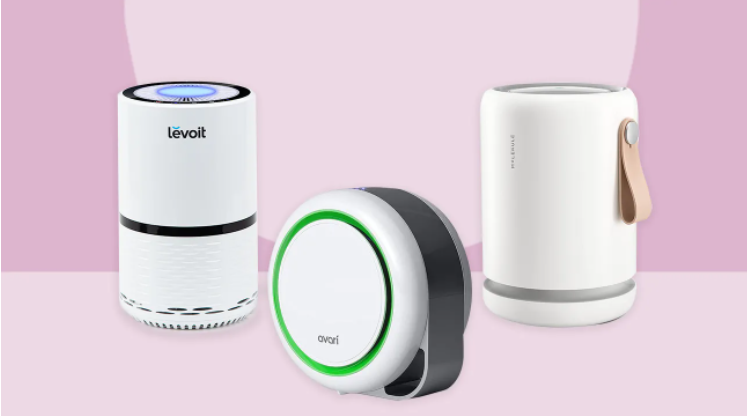If you suffer from allergies, you might want to invest in an air purifier. There are many different types of air purifiers on the market. And they can help you improve the air quality in your home so that you don’t get sick as often. Which air purifiers produce ozone? The answer is contingent on the type of air purifier you’re using and whether it produces ozone.
What Causes Ozone to Be Produce by Air Purifiers?
Short-term ozone exposure has been linked to increased mortality rates in cities. During periods of elevated ambient ozone levels, according to studies. According to ozone health effects, acute exposure can cause changes in lung capacity. It creates flow resistance, epithelial permeability, and brochures activity. Exposure to these transient effects daily can exacerbate and prolong them.
While some air purifiers produce ozone as a by-product. Others do so on purpose, claiming that ozone can be used to purify the air. The O3 molecule comprises three oxygen atoms bound together. It’s a highly reactive molecule. Which means it binds with other molecules in the air or in your lungs to create new ones. According to proponents of ozone air purification. It breaks down harmful toxins in the air.
The Environmental Protection Agency (EPA) has done a thorough analysis. How ineffective ozone is at air purification. It can break down certain chemical compounds in the air, such as toxins found in tobacco smoke. Other compounds in the air, such as dust, pet dander, and other allergens, are produced by an ozone generator. Ozone may take months to have any effect.
Ozone has the potential to break down compounds into more dangerous chemicals. Some professional purifiers use ozone to purify rooms. Killing bacteria and removing odors. But they use extremely high concentrations of ozone. And must air the room out before anyone can enter it again. It’s also known for its proclivity for causing damage to anything in the house. It has a rubber component, cracking and shattering the rubber into dust. The ozone produced by air purifiers is inefficient to compensate for harmful effects.
Air Purifier with Ozone Generator

Ozone is a colorless gas. It is naturally found in the upper atmosphere of the Earth. Ozone protects us from harmful ultraviolet solar rays. Although it can also create at ground level. It causes the formation of free radicals in biological systems. Which causes tissue damage.
Ozone-olefin reactions cause one type of damage. While ozone reacts with electron donors causes another (such as glutathione). Breathing issues can all because by inhaling small amounts of ozone.
The question we find which air purifiers produce ozone? Ozone-generating air purifiers are devices that intentionally produce ozone. It cleans the air by altering the compounds of pollutants through chemical interactions. However, this is also the mechanism by which ozone causes harmful health effects.
Furthermore, at lower concentrations, ozone is ineffective at controlling indoor air pollution. In other words, if the ozone concentration in the room is high enough to clean the air. It is also high enough to pose an inhalation hazard to the people in the room. Furthermore, ozone may react with other chemicals in the air to produce hazardous.
As a result, EH&S does not recommend using ozone generators in any situation.
Air Purifiers with Electronics

In a process known as bipolar ionization. Electronic air purifiers (such as ionizers, and hydroxyl generators, use electric voltage. It converts oxygen molecules or other species into their charged ionic components. Which inactivate airborne contaminants (BPI).
The reactive radicals in oxygen’s ionic components remove hydrogen from other molecules. The positive and negative ions surround air particles in bipolar ionization. Destroying any present germs or pathogens, and the added mass helps the air particles. It falls to the floor and is drawn into the building’s air filter.
However, because charged particles in the air sometimes stick to surfaces in the room. For example floors and walls rather than being filtered away. BPI can emit ozone and other free-radical species as a by-product. And it may be less effective than other cleaning technologies.
Air Purifiers with Filters

Filtering air purifiers pass air through a filter. Trapping polluting particles or gases. Then recirculate the clean air back into the room. Although a debate about how effective air purifiers are at reducing larger particles. Such as pollen, house dust allergens, mold spores, and animal dander. Most of these large particles settle on surfaces in the home that cannot be removed. Unless they are disturbed and re-suspended in the air.
As a result, the best way to get rid of larger allergens is to clean regularly.
Are Ozone Generators Effective At Cleaning Air?
Some devices are advertised as killing viruses. Bacteria, mold, and other biological contaminants. Also, eliminate chemical contaminants and odors. When ozone concentrations are below health standards. However, biological contaminants are not effectively removed.
Ozone also does not remove particles from the air. Such as dust and pollen, which include the particles that cause most allergies.
The ozone produced by air purifiers is ineffective at removing chemical pollutants. Ozone has been discovered to react with existing chemicals in the air. As a result, production of additional toxic pollutants. The most notable of which is formaldehyde and ultrafine particles.
Some people buy air purifiers to get rid of odors. Ozone concentrations below the health standards have show ineffective in removing chemicals. The sense of smell is also known to be dull by ozone. This not only masks rather than eliminates odors.
But it also has the potentially dangerous. Its side effect of reducing a person’s ability to detect high ozone levels.
Unlike in the case of air, ozone can be used to purify water successfully in some applications. This is because high levels of ozone can be used in water. The majority of the ozone reacts in the water, and people are rarely present when ozone is used.
What Are The Negative Health Effects Of Ozone Exposure?
Buyers of ozone generators may be unaware that ozone can harm. It harms the cells in the lungs and respiratory airways. The lining of the respiratory system is irritated and inflamed by ozone exposure. Coughing, chest tightness, and difficulty breathing are some of the symptoms.
Ozone can aggravate asthma symptoms and even contribute to asthma development. Ozone exposure at high levels can cause permanent lung damage.
Also, repeated exposure can even increase the risk of death in people who are already sick.
Children and people who suffer from bronchitis or other respiratory illnesses. It includes the elderly, who are particularly vulnerable to the health effects. Many animal studies have shown that ozone exposure causes respiratory effects. Air pollutants, such as ozone, have a particularly negative impact on birds.
What Should You Do If Your Air Purifier Makes Ozone?
If you have an ozone-producing air purifier, there are a few things you can do to reduce the potential for harm.
- Make the switch to an ozone-free alternative. Yes, this is an obvious answer that may be difficult to accept. If you spent a lot of money on an ozone-generating air purifier. However, it is a simple way to eliminate the risk of ozone-related health issues in your home.
- Check the manufacturer’s information to see how much ozone is produced. Because you don’t know how the manufacturer tested. This may be of limited use, but it will provide you with some information about the potential risk.
- In a very small enclosed space, do not use the air purifier. Maintain an open window to disperse any ozone that may be forming in the room.
- Only use it when no one else is around. If you want to clean the air in a room, turn on the air purifier and leave the room while it works. Return to the room after turning off the air purifier. And waiting for the ozone to dissipate. Of course, any exposed rubber components will not be protected.
Because of their limited effectiveness and potential hazards. You and your family should look for an ozone-free air purifier whenever possible.
Conclusion
Ozone, or O3, is most commonly found in the upper atmosphere. Where it protects us from the sun’s harmful ultraviolet rays. Electrical discharges in the air and thunderstorms also produce ozone. And while this ozone is beneficial to the environment, too much of it can cause lung damage in humans. Ozone-producing appliances, such as microwaves, stoves, and hair dryers, should be avoided. But it’s also important to know which air purifiers produce ozone.
Frequently Asked Questions
Q: What is the best way to tell if my air purifier produces ozone?
A: Check the manufacturer’s information to see how much ozone is produced. This may be of limited use, but it will provide you with some information about the potential risk. In a very small enclosed space, do not use the air purifier.
Q: Is ozone produced by HEPA air purifiers?
HEPA filters are a choice if you decide to buy a portable air cleaner. Because they do not emit ozone but do remove particulate matter from the air.
Q: What exactly is ozone cleaning and how does it function?
A: Aqueous ozone is a powerful oxidizer. It has been shown to clean effectively by killing a wide range of germs. Bacteria, and other contaminants on surfaces, as well as deodorizing and sanitizing them.
Q: Is ozone dangerous to electronic devices?
Shortness of breath, coughing, and chest pain can all be caused by low levels of ozone. Avoid exposing electronics to ozone. If you’re going to use ozone, keep it away from electronic devices and electrical outlets. These aren’t compatible with ozone. Your electronic equipment may be harmed by ozone.
Q: Why does my house smell like ozone?
A: The issue with this odor is that it can be caused by uncontrollable. Events such as rainstorms, unwittingly release this gas into the atmosphere. Ozone has been compared to other odors such as metallic, burning wire, and even chlorine. In addition to the smell of “clean” that comes from a rainstorm.
